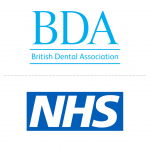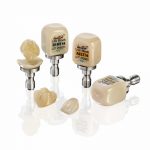In modern dentistry, providing an exceptional level of care comes with a number of other considerations. After all, today it is not just about meeting patient requirements in terms of function, but also ensuring excellent aesthetics while delivering comfortable, swift treatment.
But how can you make this process easier? By taking a closer look at the factors influencing your product selection, you can streamline your way towards success.
Proven quality
At the very core of treatment remains the need for quality products. Good quality adhesives, cements, impression materials and other solutions in your armamentarium are essential, as they facilitate excellent outcomes and help to simplify treatment in several different ways.
Use of good-quality, peer-reviewed products help to ensure that treatment is not only effective but also long-lasting, providing a durable solution for patients that will solidify their confidence in your skills. It also reduces the chance of patients needing retreatment, which could damage your reputation as a professional, causing excess time and inconvenience for both you and your patients.
Therefore, when choosing solutions for your practice, it’s wise to consider whether they are supported by scientific research. Many manufacturers will proudly display any claims or associated research on product pages on their website or in brochures, so this is a trustworthy indicator of quality.
Enhancing aesthetics
With patient demand for life-like aesthetics now the norm, it makes sense to explore options that can provide exceptional results without compromising other areas. For example, today a number of impression materials, dental cements and temporaries are developed specifically with aesthetic outcomes in mind.
These solutions will have features to help support natural-looking aesthetics throughout each stage of treatment. For example, temporisation materials, in particular, are becoming more realistic looking, meaning that patients don’t have to lose confidence in their smiles during the treatment journey. It’s also worthwhile to consider if these solutions have any features that can promote long-term aesthetics. After all, the aesthetic value of a restoration is not a short-term commitment, so it’s important to choose a dental cement that offers a long-lasting, natural looking finish.
Ease of use shouldn’t be understated
In today’s world, ease of use is just as important as function and aesthetics. After all, if a product can provide fantastic outcomes but is unwieldy, wasteful and time-consuming to use, this means that it is likely not the best choice.
Look for design features that help to enhance ease of use, including specially designed vials and bottles, syringe tips and more. These will not only help aid ease of placement but also likely curb material waste too, meaning that you can streamline treatment and benefit from products that will last longer.
Impacting the environment – a greener approach
One huge advantage of refining your product selection and the way that you provide treatment is that this is likely to have a number of beneficial impacts on the environment. For example, by choosing products that take fewer steps, you reduce plastic waste and avoid items exceeding their expiration date. Furthermore, if you choose products that have specially designed features to help reduce excess material waste, you won’t have to buy them so regularly, further reducing waste.
Of course, it’s a good idea to look at whether products have any other eco-credentials behind them, for instance recyclable or sustainable packaging. While these features won’t necessarily streamline the way you provide care, it’s a huge benefit that you can also promote on your practice website, appealing to patients that prefer businesses that have a green approach.
An easy way to streamline from 3M
Of course, even with taking these aspects into account, it can be difficult to know where to begin. It is for this reason that 3M Oral Care created Success Simplified – a consensus for best-practice recommendations to streamline the indirect restorative workflow. Created in collaboration with five leading clinicians in the industry, Success Simplified guides professionals on product selection and efficient use of these solutions, supported with clinical tips to streamline care and facilitate exceptional outcomes.
Simpler treatment, stunning results
In the end, the products you use in practice are instrumental to the standard of care you provide. By considering certain aspects of your product selection and learning how to use a smaller selection of solutions whilst still providing high-quality outcomes, you can streamline your way towards success.
To learn more about the concept of Success Simplified, you can download a free copy of the Success Simplified handbook by visiting www.3M.co.uk/Success-Simplified. You can also request a physical copy of the handbook to have in your practice.
Author: Tom Mackie | Marketing Executive – North Europe Region
For more information, call 08705 360 036 or visit www.3M.co.uk/Success-Simplified














